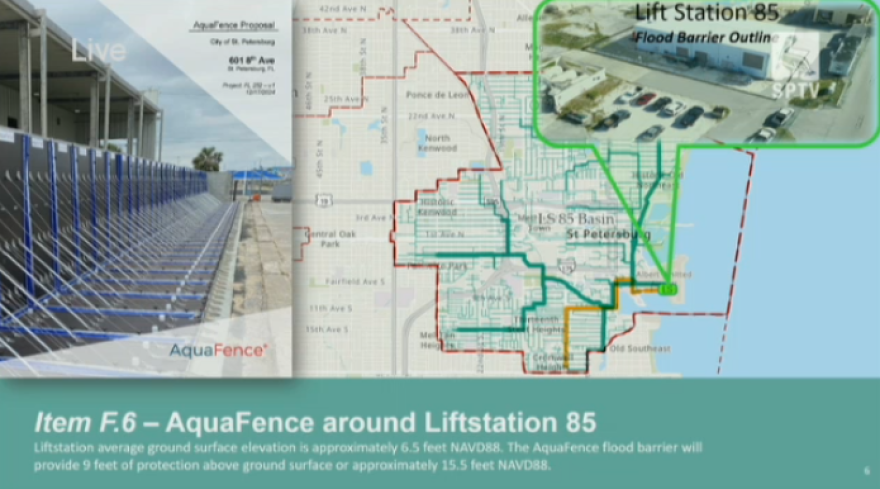You might've seen video of a large wall keeping Hurricane Helene's 7-foot-tall waves away from Tampa General Hospital.
After having to shut down multiple sewage treatment plants after damages from Helene's storm surge, the City of St. Petersburg wants a wall of its own.
RELATED: What Northeast St. Petersburg residents need to know about water usage in homes and businesses
When the agenda item was introduced at a City Council meeting on Jan. 9, council members broke into cheers.
“We all saw the videos of Tampa General Hospital and we’re like ‘How can we get that?’” said Vice Chair Lisset Hanewicz.
A 9-foot-tall, 500-foot-long AquaFence will soon guard Lift Station 85, a wastewater treatment plant that services the city’s downtown waterfront area.
Public works administrator Claude Tankersley told the council that the location was chosen for multiple reasons, especially because, "it already has a level concrete pad around the lift station and that’s required for the use of this particular product."
“A lot of our critical facilities are served by that, a lot of our hospitals and everything in downtown,” Hanewicz added.

With the plant's existing elevation, Tankersley said the device will protect the facility from up to 15 feet of water. That’s the same number as Hurricane Milton’s storm surge was expected to reach on St. Petersburg’s coast.
He mentioned that the Northeast and Southwest wastewater treatment plants, which would be the first choice of deployment if future AquaFences are purchased, don’t currently have the necessary concrete pads.
Those facilities, along with other city sites, are currently protected by a variety of existing flood prevention equipment. This includes Tiger Dams, which are flexible water-filled tubes that act similarly to sandbags.
And while city officials would like to buy more barriers for other places, it's not as simple as clicking "add to cart."
“It would not be something that you would look to put around neighborhoods or a large area unless you’re looking to spend tens of millions of dollars to do so,” Tankersley explained.
The city purchased the fences for $1,150 per linear foot.
Chair Copley Gerdes said it’s better than having to replace an entire water treatment facility.
“When you put it in perspective, (it's) $618,000 to protect tens of millions of dollars.”
The council also approved more funding for Razorback LLC, the company that currently provides waterproof coating for city equipment like tanks and pipes.
Tankersley said they can “use some of these coatings on the outside of some of our facilities to make things a bit more resistant to water until such time that we can elevate them.”
The process is called dry floodproofing.
The AquaFence should be in place around Lift Station 85 before hurricane season starts in June.




